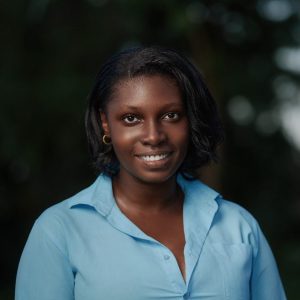Striving for sustainability, education, and healthcare, Kaikan’s newest leader brings her people’s challenges and hopes to the national stage.
LAST week marked one of Guyana’s most impactful and captivating national initiatives: the National Toshaos Council Conference. Held annually, this year’s conference brought together approximately 200 Toshaos from every region of Guyana to share common hurdles as well as potential solutions. The event serves as a platform for Indigenous leaders to have their concerns heard by national authorities. Beyond that, the conference acts as a space for community leaders to connect, discussing everything from the preservation of traditional practices to challenges in sectors such as health, security, and education.
This year’s conference welcomed many new faces, including younger leaders stepping forward to represent their communities. Among them was Katiuska Rodrigues, the new Toshao of Kaikan Village. In an interview with Pepperpot Magazine, she shared that although her community has made significant strides in recent years, thanks to a growing relationship with the State, her current focus, however, is on educating Kaikan’s next generation. Kaikan may not be widely known, but it is one of the country’s most unique and captivating villages. Nestled along Guyana’s western edge near the Venezuelan border in Region Seven, it is home to a peaceful population of just over 500 residents. Though small, Kaikan boasts a vibrant culture and little-known traditions. One of its defining features is its use of the Akawaio language mixed with Arapuna.
Speaking with Pepperpot Magazine, Toshao Rodrigues described her village as a serene, closely knit community that treasures its customs as much as its people. “As we all know, Kaikan is a very peaceful community. We have five hundred and two residents currently. Kaikan village, my village, is a very peaceful place, and the people live good together,” she said. This year’s conference marked her first as Toshao—an experience she described as both productive and enriching.
Despite its charm, Kaikan faces significant challenges, especially the high cost of living due to its remote location. Situated at one of the farthest ends of the country, transporting goods, services, and people is extremely costly. This, according to Toshao Rodrigues, has placed a heavy burden on the community. “But the cost of living is very high. Things there are very expensive because of the plane. The freight that we normally pay is very high to get things in and out of the community. We pay $230 a pound to reach Kaikan, which is very hard on the residents,” Rodrigues explained. The steep cost of travel has created a ripple effect—prices of goods and services in the village have risen significantly. In response, the community is working with the government to find affordable alternatives to access Kaikan, which is over 300 kilometres from Georgetown.
Like many rural and riverine communities in Guyana, Kaikan is deeply close-knit. With a population of just over 500, residents live as one extended family—a bond they extend to visitors as well. According to Toshao Rodrigues, the village currently supports a primary school with 92 pupils, 28 nursery-aged children, and a small but dedicated healthcare team. “We have the health post with four community health workers. Kaikan doesn’t only assist residents within the community. We also serve a neighbouring community and miners in the area. They come to Kaikan to seek medical attention,” she shared.
Given its role in providing regional medical support, the village is advocating for improved healthcare infrastructure, particularly the procurement of essential medical equipment. Rodrigues highlighted the issue: “We need things like a CT scan machine and so on. Because if I got a belly pain, they send me out, a whole medevac has to go in just to bring out the patient because we don’t know what is wrong with them. But if we keep this health post with larger equipment, it wouldn’t be necessary for the medevac to go in to collect patients like that.”
As Kaikan’s population grows, especially among school-aged children, the community has turned its focus to enhancing educational support. The terrain and size of the village present challenges in daily travel for both learners and teachers. To help alleviate this, the village is pushing for a school kitchen. Many hinterland communities have already benefitted from similar initiatives, and Kaikan hopes to join their ranks. According to Rodrigues, the kitchen has been in the works for some time, and she hopes that her voice at this year’s conference will turn that vision into reality. The addition of new desks and benches is also high on the community’s education agenda.
Thanks to recent developments from this year’s conference, Kaikan’s goals appear more attainable than ever. This year marks the village’s first participation in the Carbon Credit Fund, and Toshao Rodrigues is optimistic. Though plans are still being streamlined, she noted that the community has already made notable progress using funds from the 2023 and 2024 Low Carbon Development Strategy (LCDS). “From 2023 funds, we had a community policing group with their welding shop. We had the women with their sewing centre. We had agriculture, and then we had PTA, their group, with their boat hires and so on,” she said. “With 2024, we have built a guest house. We have the extension of the women’s sewing group for the catering. Also, we are building a mess hall for this quarter with some of the LCDS funds.”
A passionate and forward-looking leader, Rodrigues believes that this year’s conference was different from those held in previous years. She felt that toshaos were given more time and space to express their concerns. “This year, I think they’re giving us more space and more time to interact,” she said. “Last year, we didn’t have much time to interact. We were like in a hurry. Toshao was just given like seconds to speak on behalf of the community. But this year, I think they’re giving more chance or more time for Toshaos to speak or to say what are their issues and so on.”
Still early in her tenure, Rodrigues remains hopeful that ongoing dialogue and targeted investments will drive further development in Kaikan. She believes that by highlighting these matters at the National Toshaos’ Conference, the village will receive the support it needs to strengthen its education and health sectors while expanding economic opportunities. With strategic initiatives already underway and inclusion in national conversations, Kaikan’s voice—and its future—is being shaped by leaders like Rodrigues, who are committed to bridging the gap between the coast and the interior.



.jpg)








